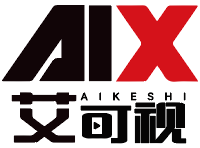در سالهای اخیر، معرفی نماهای LED تغییر جدیدی در تبلیغات خارج از خانه ایجاد کرده است. بازاریابانی که به دنبال جلب توجه مشتریان هستند، به طور سنگینی روی این نوع تبلیغات مصرف میکنند. صفحههای نمایش LED متفاوت با نمایشگرهای سنتی هستند و قادر به انیمیشن هستند که پوشش اطلاعات تبلیغدهندگان را برای هر دقیقه از تبلیغ نمایش داده شده افزایش میدهد. با کارایی انرژی، بیلبوردهای سنتی سخت میتوانند رقابت کنند. این مقاله مزایای نماهای LED، کاربردها و نگاه آینده را تحلیل میکند و چگونه سریع این نماها دیگر روشهای تبلیغاتی را جایگزین میشوند.
بیشترین مزیت نمایشگرهای LED، توانایی ارائه تصاویر با کیفیت و قطعه بندی است. در مقایسه با تبلیغات ثابت، صفحه های LED توانایی نمایش تصاویر متحرک، ویدئوهای تلویزیونی، انیمیشن ها و بسیاری چیزهای دیگر را دارند. به خاطر این ویژگی، تبلیغات حتی تعامل پذیرتر می شود. با استفاده از محتوای پویا، غیر از جلب توجه، برند ها می توانند به طور کارآمدتری ارتباط برقرار کنند. مطالعات اخیر نشان می دهد که تبلیغات پخش شده روی این صفحه ها تعامل با تماشاچیان را به میزان ۱۵۰ درصد نسبت به تبلیغات سنتی افزایش می دهد. افزایش تعامل منجر به بهبود یادآوری برند می شود که در نهایت بهبود تبدیل (کانورژن) را نتیجه می دهد.
انعطافپذیری یکی از مزایای اصلی نمایشگرهای LED است. این مزیت به تبلیغکنندگان اجازه میدهد که پیامهای خود را بر اساس زمان، آب و هوا یا هر رویداد مرتبط تغییر دهند. به عنوان مثال، یک رستوران خاص میتواند در صبحگاه گزینههای صبحانه را تبلیغ کند و در عصر به تخفیفهای شام تغییر دهد. این ویژگیها به کسبوکارها اجازه میدهد تا چندین حمله تبلیغاتی را همزمان اجرا کرده و برد خود را حداکثر کنند. این موضوع به ویژه برای کاهش هزینهها مفید است که برای شرکتها، همچون کوچک و همچون بزرگ، مناسب است.
یکی دیگر از عوامل اصلی برای کاربرد رو به افزایش نمایشگرهای LED، تبلیغات خارجی است. پانلوهای تبلیغاتی معمولی معمولاً به سیستم های نورپردازی مصرف کننده انرژی بالا وابسته هستند، در حالی که فناوری LED مقدار کمی از برق را مصرف می کند. این موضوع هزینه های عملیاتی را بهبود می بخشد، اما هنگامی که با تغییر ناگهانی ترجیحات مصرف کننده ها به سمت شرکت های دوستدار محیط زیست جفت شود، تبلیغات پرداختی به نمایشگرهای LED جابجا می شود. شرکت ها به راحتی می توانند از LEDها برای بهبود تصویر خود و ارائه ادعاهای پایداری استفاده کنند، که برای مشتریان آگاه به محیط زیست مفید است.
نمایشگرهای LED به عنوان یک مؤلفه موثر برای تبلیغات خارجی عمل می کنند. آنها را می توان از مرکز خریدها تا ورزشگاه ها، یا هر جا که ترافیک پیاده رو بسیاری وجود دارد، از جمله میدان تایمز در شهر نیویورک که هر ساله میلیون ها گردشگر را به خود جذب می کند، دید. بخاطر پیشرفت نمایشگرهای LED، شهرهای کوچک الآن قادرند از فناوری مدرن برای بهبود رویدادهای جامعه و بهبود فعالیت های تجاری استفاده کنند که به رشد شهر کمک می کند.
امکان استفاده از فناوری LED در تبلیغات خارج از خانه بسیار زیاد است به دلیل بهبودهایی که ممکن است از پیشرفتهای فناوری جدید ناشی شود. استفاده برند از تحلیل دادهها و هوش مصنوعی برای تبلیغات شخصیسازی شده به منظور هدفگذاری بر روی افراد، نحوه تأثیر تبلیغات بر جامعه را تغییر خواهد داد. علاوه بر این، استفاده از فناوری 5G مسیرهای بیشتری برای بهروزرسانیهای زنده، محتوای تعاملی و تغییر در ارتباط برند با حوزهٔ مخاطبان خود را باز خواهد کرد.
در نتیجه، ادغام بینظیر صفحههای نمایش LED در تبلیغات خارج از خانه، نشاندهنده یک تغییر در ارتباط برند و مصرفکننده است. سیاست بازاریابی به دلیل آسانی تغییر اطلاعات، تصاویر با کیفیت بالا، مصرف انرژی کم و چندمنظورهبودن دستگاهها، تقریباً بدون محدودیت است. در نهایت، شرکتهایی که این فناوری را پذیرفتهاند، بیشترین سود را در محیط رقابتی شدید و رشد یافتهٔ کسبوکار خواهند برداشت.


